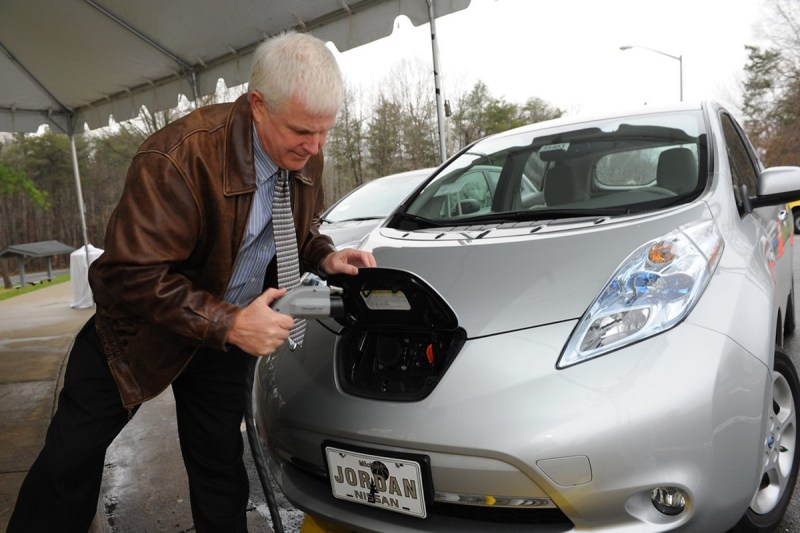So you’ve purchased or are considering purchasing an electric vehicle. Congrats! With the U.S. Department of Transportation green-lighting plans for 75,000 miles of highway EV charger stations across all 50 states, Washington, D.C., and Puerto Rico (per CNBC), charging should get easier and easier over the next five years. The question remains, however, where do you juice up?
Though there are, according to U.S. News & World Report, almost 50,000 charging stations scattered across the country and over 117,000 electric vehicle supply equipment ports out there, most of these are going to suck more time than energy. The large majority of today’s EV charging stations are Level 2 ports incapable of a quick charge, delivering electricity at a slug-slow speed of 8.3 kilowatts. Charging an EV at these stations averages 20-30 miles of battery range per hour, which translates to anywhere between six to 12 hours to fully charge an EV using a Level 2 public charger. If you’re like most people, this wait isn’t feasible. Enter the Level 2 home electric car charger.

Like anything, putting in an EV home charging station is going to come with challenges to earn more ease and significant expenses to save time and money.
The standard EV plug
Almost all electric vehicles come equipped with Level 1 chargers that allow a direct plug-in to a standard outlet. The U.S. Department of Transportation describes Level 1 equipment as the slowest option. Charging via a common residential 120-volt AC outlet can take 40-50 hours to fully charge an EV battery and five to six hours to charge a plug-in hybrid electric vehicle from empty.
Though drivers might be able to add dozens of miles of range with an overnight charge, constantly charging the battery is going to cut into its life. Consumers also need to run a variety of other things from their home’s electrical system (refrigerators, washers and dryers, microwaves, lamps, lights, stoves, fans, and on and on) and the additional load might be too much for the system to handle.
Can I install an EV charger at home?
Besides the ultra-proprietary Tesla, all EV carmakers and charging equipment manufacturers around the planet plug into a standardized electric vehicle supply equipment, the J1772 connector. (Tesla does provide a necessary adapter with its vehicles.)
Level 2 charging at home is much faster because there’s a higher voltage at higher amperage available (per Edmunds research). This beefed up electrical pull, however, necessitates hardier equipment that’s more sturdy to handle the extra load. Level 2 EVSE charging equipment is likely going to be spendier, but the convenience earns owners a massive amount of time. And costs can be offset in a couple of different ways. (More on this later.)
Choosing a charger
Level 1, 120-volt AC, at-home chargers gain about two to five miles of range (depending on environmental conditions and battery charge percentage) per hour of charging, according to the government-backed Energy Star energy efficiency organization.
The federal government’s Energy Star-certification guarantees “energy savings, safety, convenience, and smart technology” when choosing a Level 2 home charger. The upgrade adds 10 to 20 miles of range with even faster charges when wired to 50-amp Level 2 chargers. Prices for these chargers range from about $350 to $950 on Amazon.
Choosing an electrical contractor
The next step after you’ve chosen an EV charger that works for your place is choosing an electrical contractor. Unless you are a licensed electrician, do not attempt to install an at-home EV charger yourself. This is complicated electrical work that requires complex knowledge about wiring and electrical components — not to mention likely zoning and civic codes.
Selecting someone to install your home EV charger is a personal process. General guidance points to doing adequate research on contractors — on the web and in the real world. Check references, check backgrounds, and make sure that whoever you hire is licensed to install EV home charging stations.
Efficiency equals savings
Seeing that Level 2 chargers provide higher efficiency and faster charging times when compared with Level 1 chargers (as seen on Energy Star charts), Level 2 averages about 10% more efficiency than Level 1 models, while adding about four times more miles per hour of charging. The elevated efficiency available on Level 2 home chargers means less time juicing up, helping to reduce energy bills and the amount of power used.
This savings only accounts for when cars are plugged in. According to Energy Star, however, EV chargers are typically in standby mode and not actively charging a vehicle for about 85% of the time. Energy Star-certified EV chargers use about 40% less energy in standby mode, which reduces their impact on wallets and the environment. Several U.S. cities now offer to source this electricity from solar or wind power, which adds more sources of green.
Just like most things worth their weight, installing a home charger for your EV takes an inconvenient financial, energetic, and temporal commitment. Like any solid investment, though, if you do your homework and make informed moves, a home charger can pay for you and for the planet in the end.
Editors' Recommendations
- The new electric Mercedes G-Class comes with four motors and a U.S. exclusive
- Mercedes-Benz Wallbox smart home charger now available nationwide for fast EV charging
- The U.S. government may delay EV requirements — what that means for car buyers
- An all-electric Jeep Wagoneer S is set to debut this fall: Everything we know so far
- GM slashes EV production in half for 2024, still plans to have 1,000,000 electric cars by 2025



